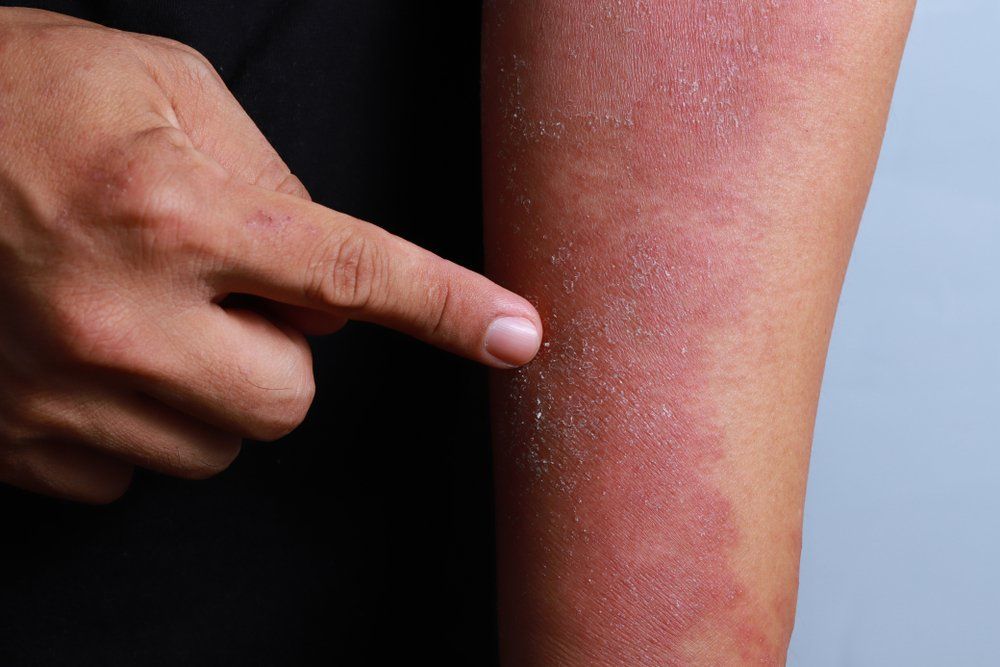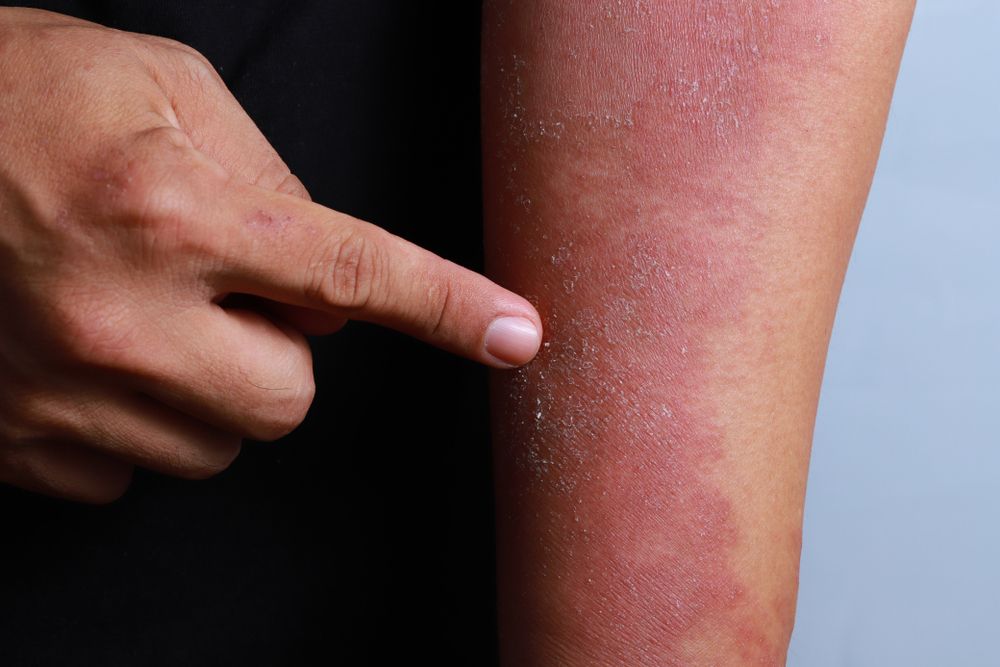- Case-Based Roundtable
- General Dermatology
- Eczema
- Chronic Hand Eczema
- Alopecia
- Aesthetics
- Vitiligo
- COVID-19
- Actinic Keratosis
- Precision Medicine and Biologics
- Rare Disease
- Wound Care
- Rosacea
- Psoriasis
- Psoriatic Arthritis
- Atopic Dermatitis
- Melasma
- NP and PA
- Skin Cancer
- Hidradenitis Suppurativa
- Drug Watch
- Pigmentary Disorders
- Acne
- Pediatric Dermatology
- Practice Management
- Prurigo Nodularis
- Buy-and-Bill
Article
Atopic dermatitis and psoriasis as a spectrum condition
Author(s):
Thinking of psoriasis and atopic dermatitis as a spectrum, rather than separate diseases might lead to better understanding, and potentially better treatments.
Thinking of psoriasis and atopic dermatitis (AD) as a spectrum, rather than separate diseases might lead to better understanding, and potentially better treatments, two authors have proposed in the journal Current Opinion in Immunology.
“A case can be made that psoriasis and AD exist across a spectrum where polar T-cell axes can be variably present and create some overlapping disease characteristics,” wrote authors Emma Guttman-Yassky, M.D., Ph.D., and James G. Krueger, M.D., Ph.D.
When these T-cell mediated inflammatory skin diseases are studied in European-American populations, the differences between them are clear in both T-cell polarity and cytokine arrays, the authors note.
Psoriasis is driven in large part by Th17 T-cells and the associated activation of IL-17, they said. In contrast, a strong driver of AD is Th2, which is associated with overproduction of IL-4 and IL-13.
However, subtypes including Asian-origin, pediatric, and intrinsic AD have a prominent IL-17 component. That, along with tissue patterning that overlaps with psoriasis histopathology, starts to build the case for a spectrum of immune disease, which is depicted graphically in the article.
“We used to think that atopic dermatitis was a purely Th2 disease,” Dr. Guttman-Yassky said in an interview with Dermatology Times. “We now know that it's much more complex, and instead of being a homogeneous disease, it actually has different phenotypes. While Th2 activation is common to these phenotypes, they differ in activation of Th17 and Th22 T-cell axes, which show for example significant increases in Asians with AD.”
“So, we need to think about it as a continuum, and for different patient subsets with different phenotypes of atopic dermatitis, we need to think that maybe some treatments from the psoriasis arena may actually qualify,” said Dr. Guttman-Yassky, the Sol and Clara Kest Professor of Dermatology and Vice Chair for Research and the director of the Laboratory of Inflammatory Skin Diseases in the Department of Dermatology at Icahn School of Medicine at Mount Sinai Medical Center, New York, N.Y.
THE DEVELOPMENT OF TARGETED TREATMENTS
Where this mindset may be most useful now is in the development of targeted treatments, particularly for AD, the authors suggest.
Targeting Th2 and IL-4/IL-13 with dupilumab has proven to be a very effective strategy for atopic dermatitis, according to the authors.
However, the presence and influence of the Th17 cytokine axis in certain AD subtypes suggest treatment might be optimized by targeting multiple cytokines; in particular, they noted, targeting Th17/IL-23 has proven to be an effective treatment strategy for psoriasis.
Targeted treatment of AD is generally more complicated than that of psoriasis, Dr. Guttman-Yassky said, since multiple immune axes may contribute to AD disease pathogenesis.
The approval of dupilumab for moderate-to-severe AD represented a major step forward in the targeted treatment of this disease, according to the authors. When treated with dupilumab, an IL-4 receptor antibody that blocks receptor binding of IL-4 and IL-13.
In particular, studies showed that approximately 60% of patients attained an EASI75 response on dupilumab, and 35% attain an EASI90 response, the authors wrote.
However, studies of agents targeting IL-17, ixekizumab and brodalumab, suggested PASI75 and PASI90 responses of 90% and 60%, respectively.
“We do not see these results in atopic dermatitis yet, even with very good drugs like dupilumab,” Dr. Guttman-Yasky said in an interview. “So, we may need to think that we need to target several axes in atopic dermatitis for complete disease resolution in AD because of differences between different cytokine axes in different AD phenotypes.”
While the outcome of dupilumab treatment argues for a primary Th2-centered pathogenesis of AD, some investigations have shown that the drug also modulates the IL-23/Th17/Th22 axes, the authors wrote.
So instead, it might be best to think about AD not only as a Th2-predominant disease, but as a “multi-axis” immune disease to which Th22 and potentially Th17 are contributors; that would mean that combinations of targeted therapy could be required to achieve maximum therapeutic success, Drs. Guttman-Yassky and Krueger said in their article.
In particular, Th22 is also commonly present and activated across major AD subtypes, and clinical efficacy has been recently reported for fezakinumab (ILV-094), an anti-IL-22 antibody, according to results of a 60-patient placebo controlled trial recently reported in a meeting abstract in the Journal of Investigative Dermatology.2
Future studies need to determine whether subsets of patients, such as Asian AD patients, can benefit from targeted treatments that are effective in psoriasis, according to the authors. Also, the emergence of bi-specific and tri-specific antibodies could represent an opportunity to improve on single-cytokine targeting approaches in this disease.
“Psoriasis is about 10 years, if not 12 years, ahead of atopic dermatitis” in development of targeted therapeutics, Dr. Guttman-Yassky said in the interview. “I think we'll need to still have single targeting in atopic dermatitis with all these agents to really understand their contribution for the disease. And then we may need to also think about dual targeting to really achieve maximum disease control.”
DISCLOSURES
Drs. Guttman-Yassky and Krueger received no funding for the article and both declared no conflicts of interest.
REFERENCES
Guttman-Yassky E, Krueger JG. “Atopic dermatitis and psoriasis: two different immune diseases or one spectrum?” Current Opinion in Immunology. October 2017. https://doi.org/10.1016/j.coi.2017.08.008
Guttman-Yassky E, Khattri S, Brunner PM, et al. “A pathogenic role for Th22/IL-22 in atopic dermatitis is established by a placebo-controlled trial with an anti IL-22/ILV-094 mAb,” Journal of Investigative Dermatology. May 2017. DOI: http://dx.doi.org/10.1016/j.jid.2017.02.329






